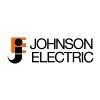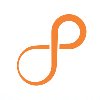Filter interviews by
Sahasra Electronics Quality Engineer Interview Questions and Answers
Sahasra Electronics Quality Engineer Interview Experiences
1 interview found
I applied via Company Website and was interviewed in Aug 2024. There was 1 interview round.
(2 Questions)
- Q1. SMT & ASSY PROCESS
- Q2. 5 Quality Core tools
- Ans.
The 5 Quality Core tools are essential techniques used in quality engineering to improve processes and products.
1. Process Flowcharts: Visual representation of the steps in a process to identify areas for improvement.
2. Cause and Effect Diagrams (Fishbone Diagrams): Tool used to identify and analyze potential causes of a problem.
3. Check Sheets: Simple data collection tool used to track the frequency of defects or issu...
Interview Preparation Tips
Top trending discussions






Interview questions from similar companies

Leadership skills, team spirit, communication skills, problem-solving skills, analytical skills, and decision-making skills.
(3 Questions)
- Q1. Can you tell me about yourself?
- Ans.
I am a dedicated Quality Engineer with a strong background in ensuring product quality and compliance with industry standards.
Experienced in conducting quality control tests and inspections
Skilled in identifying and resolving quality issues
Proficient in using quality management tools and techniques
Strong attention to detail and analytical skills
Excellent communication and teamwork abilities
- Q2. What are your strengths and weaknesses?
- Ans.
My strengths include attention to detail, problem-solving skills, and strong communication. My weaknesses include a tendency to overthink and difficulty saying no.
Strengths: attention to detail
Strengths: problem-solving skills
Strengths: strong communication
Weaknesses: tendency to overthink
Weaknesses: difficulty saying no
- Q3. Tell me about an experience when you faced difficulty at work while working on a project
- Ans.
I faced difficulty at work while working on a project due to conflicting requirements from different stakeholders.
Received conflicting feedback from different stakeholders on project requirements
Struggled to prioritize and balance the needs of each stakeholder
Had to facilitate meetings and negotiations to reach a consensus
Implemented a compromise solution that satisfied all parties involved
Interview Preparation Tips

Quality Engineer Interview Questions & Answers
MCM Telecom Equipmentposted on 22 Jun 2024
(2 Questions)
- Q1. Least count value of vernier caliper
- Ans.
The least count value of a vernier caliper is the smallest measurement that can be read on the scale.
The least count value is typically engraved on the main scale of the vernier caliper.
It is calculated by dividing the smallest division on the main scale by the total number of divisions on the vernier scale.
For example, if the smallest division on the main scale is 0.1 mm and there are 10 divisions on the vernier scale
- Q2. What is 5's ,tell about standardise
- Ans.
5S is a methodology used to organize a workplace for efficiency and effectiveness by identifying and storing items used, maintaining the area and items, and sustaining the new order.
5S stands for Sort, Set in Order, Shine, Standardize, and Sustain.
Standardize in 5S refers to creating consistent processes and procedures for maintaining the organized workplace.
Examples of standardizing in 5S include creating visual manag...

I applied via Referral and was interviewed in Jan 2023. There were 2 interview rounds.

(2 Questions)
- Q1. What is the inprocsss Quality standard
- Ans.
The in-process quality standard is a set of guidelines and criteria that ensure quality control during the manufacturing process.
It includes monitoring and controlling the production process to ensure that the final product meets the required quality standards.
It involves regular inspections and testing of the product at various stages of production.
It helps to identify and correct any defects or issues before the fina...
- Q2. Quality standards are defined as documents that provide requirements, specifications, guidelines, or characteristics that can be used consistently to ensure that materials, products, processes, and service...
Interview Preparation Tips

I applied via Company Website and was interviewed in Jul 2022. There were 2 interview rounds.

(4 Questions)
- Q1. 1- Introduction 2- About my previous job
- Q2. 3- Why are leaving job
- Q3. 4- salary discussion
- Q4. 5- keep. Your all Document

I was interviewed in Sep 2023.
(3 Questions)
- Q1. Self indtroduction
- Q2. Family background
- Q3. Salary Package E
(2 Questions)
- Q1. Exlpain about 8D
- Q2. Explain about ECN
- Ans.
ECN stands for Engineering Change Notice, a document used to communicate changes in design or process to stakeholders.
ECN is used to inform stakeholders about changes in design, materials, processes, or specifications.
It includes details such as the reason for the change, impact analysis, implementation plan, and approval signatures.
ECNs are crucial for maintaining product quality, regulatory compliance, and traceabili...
Skills evaluated in this interview

Quality Engineer Interview Questions & Answers
MCM Telecom Equipmentposted on 16 Dec 2021
I applied via Naukri.com and was interviewed in Jun 2021. There was 1 interview round.
Interview Questionnaire
2 Questions
- Q1. 1.what is visual inspection?
- Ans.
Visual inspection is a method of evaluating the quality of a product or process by visually examining it.
Visual inspection involves using the human eye to detect defects, flaws, or deviations from the desired standards.
It is a non-destructive testing method that can be performed at various stages of production or during final inspection.
Visual inspection can be aided by tools such as magnifying glasses, microscopes, or...
- Q2. 2. What is functional testing
- Ans.
Functional testing is a type of software testing that verifies the functionality of an application or system.
It focuses on testing the individual functions or features of the software.
It ensures that the software meets the specified requirements and works as expected.
It involves testing the inputs, outputs, and interactions of the software.
It can be performed manually or using automated testing tools.
Examples include t...
Interview Preparation Tips
#: Cracks
#: Corrosion
#: Impact
#: Cavities
#: Dents etc
Skills evaluated in this interview

I was interviewed in Oct 2017.
Interview Questionnaire
5 Questions
- Q1. Am fresher when am came to Johnson Electric .
- Q2. Asked me the basic Knowledge of instruments and measuring.
- Q3. Asked me about Johnson Electric
- Q4. About my Qualification and my family back round
- Q5. Discussed about the Salary,
Interview Preparation Tips
Experience: So what i managed the session .

I applied via Naukri.com and was interviewed before Feb 2022. There were 2 interview rounds.

(2 Questions)
- Q1. How to handle customer issues. How to deal with customer product failure
- Ans.
To handle customer issues and product failures, it is important to have effective communication, problem-solving skills, and a customer-centric approach.
Listen to the customer's concerns and empathize with their situation.
Investigate the issue thoroughly to identify the root cause of the problem.
Communicate the findings to the customer in a clear and transparent manner.
Offer solutions or alternatives to resolve the iss...
- Q2. How to manage product quality and acheive product yield
- Ans.
To manage product quality and achieve product yield, it is important to implement quality control measures, optimize production processes, and continuously monitor and improve product performance.
Implement quality control measures such as regular inspections, testing, and audits to ensure product quality meets the desired standards.
Optimize production processes by identifying and eliminating bottlenecks, reducing waste...
Interview Preparation Tips


(2 Questions)
- Q1. Family background
- Q2. Self indtroduction
(2 Questions)
- Q1. Explain about 8D
- Ans.
8D is a problem-solving methodology used to identify, correct, and prevent recurring problems in manufacturing or service industries.
8D stands for 8 disciplines, each representing a step in the problem-solving process.
It involves creating a team, defining the problem, implementing short-term containment actions, identifying root causes, implementing permanent corrective actions, preventing recurrence, recognizing team ...
- Q2. Explain about ECN
- Ans.
ECN stands for Engineering Change Notice, a document used to communicate changes in design or process to stakeholders.
ECN is used to inform stakeholders about changes in design, materials, processes, or specifications.
It helps in maintaining documentation and ensuring all parties are aware of the changes.
ECNs are typically reviewed and approved by cross-functional teams before implementation.
Examples of ECN include cha...
Skills evaluated in this interview
Sahasra Electronics Interview FAQs
Tell us how to improve this page.
Sahasra Electronics Interviews By Designations
Interview Questions for Popular Designations
- Quality Inspector Interview Questions
- Senior Quality Engineer Interview Questions
- Quality Controller Interview Questions
- Quality Assurance Interview Questions
- Quality Manager Interview Questions
- Quality Executive Interview Questions
- Quality Assurance Officer Interview Questions
- Executive Quality Assurance Interview Questions
- Show more
Sahasra Electronics Quality Engineer Interview Process
based on 2 interviews
Interview experience
Quality Engineer Interview Questions from Similar Companies
Sahasra Electronics Quality Engineer Reviews and Ratings
based on 1 review
Rating in categories
|
Quality Engineer
14
salaries
| ₹1.9 L/yr - ₹4.8 L/yr |
|
Assistant Manager
13
salaries
| ₹4.7 L/yr - ₹8 L/yr |
|
SMT Operator
12
salaries
| ₹1.5 L/yr - ₹3 L/yr |
|
SMT Engineer
10
salaries
| ₹1.5 L/yr - ₹2.5 L/yr |
|
NPI Engineer
8
salaries
| ₹3 L/yr - ₹3.5 L/yr |

Bharat Electronics

Hindustan Aeronautics

TCS

Infosys
- Home >
- Interviews >
- Sahasra Electronics Interview Questions >
- Sahasra Electronics Quality Engineer Interview Questions









